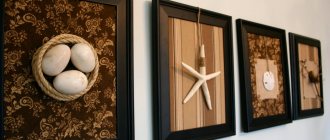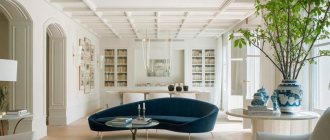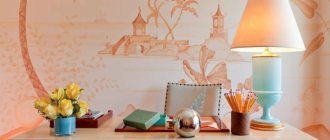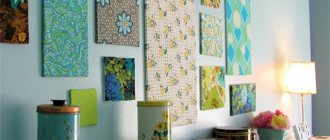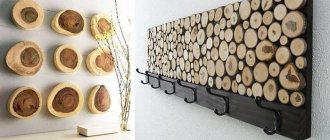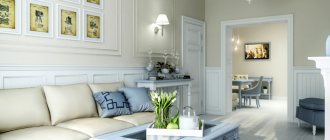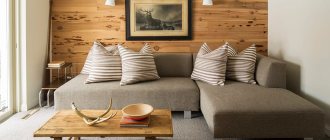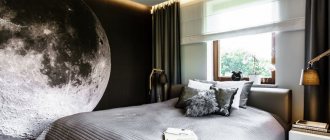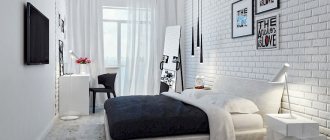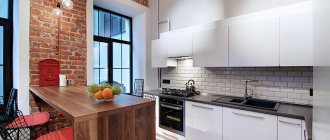The tradition of decorating the walls of rooms with decorative panels made of wood has come into modern interior design from time immemorial. Presumably, at first it was customary to hang amulets or talismans on the wall of a home, bringing prosperity to the house and good luck in business.
Carved wood clock Wooden mosaic panel in the living room
Today, typesetting or carved wood panels, as a rule, perform purely aesthetic functions, although products of an advertising and informational nature are also quite popular.
Figured carving on a wooden panel
Options for wooden decorative panels
Natural raw materials are easy to process, so you can create a sculptural volume, burn or saw out paintings. Compositions are assembled from saw cuts and boards, bars and shavings. Due to the peculiarity of the texture, original works are obtained that are difficult to replicate. With proper care, the decor will last for decades.
Relief view
Wood panels are made using bas-relief technology. The convex details of the painting protrude forward, creating a 3D effect. Three-dimensional image elements are partially hidden under flat components. The works have the correct geometry in the form:
- ovals;
- rectangles;
- squares;
- circles
The technology allows you to create real works of art, depicting scenes from life or books, landscapes and still lifes. Convex views will decorate the wall of the living room, dining room or office. A miniature wooden panel in the shape of dishes, food or flowers is appropriate in the kitchen.
Openwork cutting
Instead of volumetric parts, shaped through slots are used that cover the components of the picture. The image is perceived as light and airy, like lace. The elegant canvas consists of many elements of different sizes and thicknesses. Parts of the decor are painted to add mood or depth. Openwork technology looks luxurious in the living room and bedroom.
Lacy panel Source i.ytimg.com
Flat-striped method
The image is cut on a flat board. Shallow dihedral grooves run along the outline of the picture. Wooden wall panels can be made in natural colors or painted (tinted). The technology is often combined with openwork cutting and relief, achieving a volumetric effect. The decorations fit harmoniously into the kitchen, hallway and children's room.
Wood carving Source yandex.net
See also: Catalog of companies that specialize in finishing materials.
Typesetting variety
The decor is assembled from many components of different shapes, textures and shades. To avoid gaps, the image is fixed on a hard surface and then protected with varnish. Thematic subjects are abstraction and nature. In panels using the patchwork technique, the beauty of the material is played out, combining wood of different types. In jewelry made from painted bars, attention is paid to the unusual cut.
Patchwork on the wall Source roomester.ru
From slats
The picture is assembled from narrow boards of different lengths, laying out a pattern or design. Options can be either solid or “air”. Volume is obtained by combining colors. Decor made from different types of wood looks luxurious. Craftsmen often tint parts to achieve the desired shade. Abstract and natural motifs are appropriate as thematic subjects. Decorations are placed in the bedroom, nursery and hallway.
From slices
When making a wooden panel on the wall, saw cuts are used. Round or rectangular dies are collected in random order or made up into pictures. The parts are combined according to color, diameter and type of wood, emphasizing the beauty of the texture. Canvases can be either framed or “free”. The decoration is suitable for the living room, office and nursery.
Sections in wall decor Source livemaster.ru
Wall decoration and methods for attaching wooden slats with your own hands
Fastening is carried out in two main ways:
- Glue. For this method you will have to carefully prepare the surface. Large irregularities will not allow for high-quality cladding. Special adhesives are used. The walls or ceiling are first primed for better adhesion.
- Frame or sheathing. This method of fastening is necessary when planning loads on the slats or in the presence of significant defects on the surface. The sheathing is made of wooden beams or boards. Fastening to the wall is carried out with dowels. The installation step is 40-60 cm.
Attaching the lamellas to the sheathing can be done using nails or screws. The caps should be recessed into the wood and not visually noticeable.
What style are they used in?
Wooden wall decor is often used in interior design. A correctly selected picture will emphasize the features of the design direction in the room or smooth out the technical flaws of the room. For each style there are different types of panels.
Classic
Decoration made from natural material will harmoniously fit into the aristocratic design. The image in shape and color echoes the decor in the space. Paintings created using relief technology are often used. Three-dimensional portraits, figures of people or animals are placed in expensive frames. Symmetrically placed elements do not disturb the harmony of the room.
Classic panel Source woodenshop.ru
In a classic interior, a huge wooden panel created using the flat-notch method would be appropriate on the wall. In the office it will be an antique map, in the living room - a modular canvas, in the bedroom - a spectacular headboard. The design plays on the beauty of natural wood, without artificial paints.
Office decoration Source roomester.ru
Modern
The refined style is dominated by smooth transitions and natural motifs. Wooden paintings fit harmoniously into the interior of the premises. In the wall panels there are plant and animal subjects that are intertwined with each other. The decor successfully combines wood, metal and glass.
Wood in a modern style Source i.pinimg.com
When designing Art Nouveau style, abstraction is appropriate. Decorations using openwork or relief technology are assembled in the form of modular canvases in the living room, hallway or office. Instead of a headboard in the bedroom, they use images of bushes with branches reaching into the ceiling. Traditional “sun” mirrors are assembled from slats of different sizes.
Wall decoration in Art Nouveau style Source i.pinimg.com
The artistic possibilities of plywood
To prevent the wall from looking empty, a painting or photograph is hung on it - this is an already established tradition. But what if we approach this from the other side and make the same picture unusual? The most suitable material for this would be plywood of a beautiful natural color, light and strong.
Meaningful photo frames
Which plywood to choose
For this kind of decoration you will need plywood with a thickness of 4 to 10 mm. If panels are planned using other materials, for example, mirrors/ceramics, the thickness of the sheet should be increased. Massive products and fabric larger than 45 cm require additional reinforcement on the reverse side to avoid deformation.
The back of the plywood is reinforced with wooden blocks.
Note! You can use ultra-light plywood, which is 40% lighter than regular plywood. True, its price is also much higher due to the use of tropical wood.
Since such decor will be in the room, it is worth choosing material of the FK and FBA brands based on natural glue. And ready-made sanded sheets will help reduce the time for processing the finished product.
The advantages of plywood products include:
- ease of processing;
- minimum waste after work;
- strength.
How to do it yourself
Handmade interior decorations take a lot of effort from craftsmen, which is why the crafts have a high price. It's often difficult to find decor in the right size, style or theme. To save money and time, you can create a wall panel yourself.
Choosing a wood species
The durability and beauty of a painting depends on the quality and type of raw materials. Wood is classified by grade:
- Oak. Durable, porous surface with a beautiful brown or yellowish-straw texture. When drying, it often comes apart. The older the plant, the darker the cutting area.
- Birch. The wood is light in color, has a slight wavy pattern on the cut and chaotically scattered reddish spots. The growth rings are almost invisible.
- Beech. Dense, heavy material is resistant to moisture. Yellowish-pink surface with a brown core and pronounced texture.
- Linden. Beautiful white wood does not darken or crack over time. Pliable raw materials are easy to saw into parts, bend and paint.
- Alder. When cut, the material acquires a noble reddish tint, does not deform when dried and does not rot from moisture. The tree has a pleasant natural aroma that lasts long in the room.
- Pine. The raw material has a yellowish surface and a pink core and has distinct rings. Due to its high moisture permeability, the material quickly absorbs dyes.
The interior wall canvas can be cut from any type of wood. The painting plays with the natural pattern of the variety or the pleasant roughness of the cut. In combined jewelry, attention is paid to the color variety of the material.
Advantages and disadvantages
Decor made from slats has the following advantages:
- environmental cleanliness;
- ample opportunities for designers to create various compositions that differ in color and size;
- repairability of the slatted coating: the ability to eliminate defects on the surface, restore color, replace individual elements, etc.;
- the ability to change the appearance by external processing (painting);
- versatility, possibility of use in premises for various purposes;
- increased feeling of coziness and comfort.
- affordable price;
- ease of installation;
- masking all wall defects;
Decor made from wooden slats also has certain disadvantages:
- cladding with lathing reduces the total area of the room;
- the flammability of wood, which increases the fire hazard of the entire room;
- insufficient durability of some types of wood.
To decide on the use of wooden slats, you should carefully analyze the pros and cons of such cladding, taking into account specific conditions.
Wood panel panel
Volumetric decor made from pieces or scraps of boards looks luxurious on the wall. The canvas can be created from elements of unequal length, alternating raw materials of different textures and colors. A large-scale picture is assembled like a mosaic, independently adjusting the width and length of the product. The wood is arranged in a specific pattern or randomly.
Step-by-step instructions for creating
Before starting work, prepare a jigsaw (knife) and “liquid nails” glue. You will need a sketch of the future panel, timber and a thick base board. Sequencing:
- Create details. The wood is cut into dies of different thicknesses. Pieces with an angular front cut look original. The number of elements is checked according to the panel diagram.
- Clean with sandpaper. To remove unevenness, you need to sand the surface first.
- Attach the bars to the plywood. On the floor they experiment with combinations of colors, thickness and arrangement of parts.
- Fixation. The elements are connected using glue. Dripping residues of “liquid nails” are removed with a metal spatula or a damp cloth. If the substance is not removed, the decoration will have a sloppy appearance.
- Wall installation. Holes are made in the base into which fasteners are threaded.
After drying, the wood panels are coated with a protective compound. To highlight the beauty of the natural texture, stain is used. Any paint is suitable for decoration (latex, water-based, acrylic). The more layers, the more intense the color of the material and the deeper the volume.
Application
Zoning (partitions)
Wooden buffels are ideal for zoning spacious rooms. An openwork partition, assembled from thin slats, visually divides the room into zones, and at the same time perfectly transmits light. Using this design, you can separate the dining table in the living room, fence off the office, and add comfort to the relaxation area. There are a lot of options.
Another advantage of partitions made from slats is that they are extremely simple to make. Almost everyone can do this.
You just need to fix the load-bearing beams on the ceiling and floor, and attach the buffels to them using nails, screws or metal corners. After which all that remains is to cover them with stain, varnish or paint, and the work can be considered complete. And if the structure becomes boring or loses its relevance, it can be easily dismantled without leaving behind piles of construction waste.
Wooden slats with a cross section of 20×50 and 50×50 mm are strong enough so that bookshelves and even an LCD panel can be hung on the partition.
Wall decoration
Reiki provides the interior artist with unlimited scope for creativity. By placing the boards vertically, horizontally and at an angle, you can “draw” the most complex ornaments on the walls.
If the walls have a smooth surface and clear geometry, buffels can simply be glued to them using liquid nails or other building compound. If the conditions for installation are not ideal (and this is usually the case), a supporting frame is needed. The slats are attached to it using nails or self-tapping screws.
However, there is a much more convenient installation method. This is a hidden fastening system using special clips that are not visible on the front surface of the skin.
Ceiling decoration
Slatted ceilings have not lost their popularity for many years, and there are good reasons for this. A sheet of thin wooden planks effectively hides the unevenness of the floor slab. Under it you can hide electrical wiring and other communications. It is especially important that all engineering components will be well ventilated, they can be inspected at any time for damage, and access for repairs is always open. After all, removing several slats and then putting them back costs nothing.
Floor covering
A lattice false floor made of moisture-resistant wood (for example, larch) will come in handy in a steam room. Layed on top of the tiles, it will relieve steamers from the unpleasant contact of bare feet with the tiled surface.
Stair railing
Buffels are perhaps the ideal tool for constructing stair railings. By sewing up a wall from floor to ceiling with vertical slats, you can create a reliable fence and completely protect yourself from accidental falls.
Headboard
A rather original way to use slats in the interior is to create a headboard for a bed. For greater expressiveness, such a design can be illuminated using LEDs, which, by the way, will serve as a night light if the residents of the house are uncomfortable in complete darkness.
Slats can correct imperfect room geometry. Vertical planks visually “raise” a low ceiling, while horizontal planks make the room wider
Furniture facades
A simple frame, two pairs of hinges and a little imagination - and you can get an original facade for a clothes closet or kitchen unit. To be fair, it is worth noting that many housewives do not like such doors, since dust gets inside the furniture frame. And yet slatted facades have the right to life, if only because they decorate the interior and make it original.
Of course, in this article we have listed only the main ways to use slats in the interior. This inexpensive and easy-to-handle material offers many more possibilities.
For example, you can assemble an original lampshade or tabletop for a coffee table from thin wooden planks. But before you start work, you need to purchase lumber, and not make a mistake when choosing.
To protect the wooden slats from moisture and temperature changes, as well as to add decorativeness to it, it is stained or painted, and then varnished

